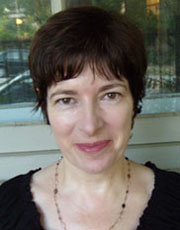Writing in the November issue of the Journal of Virology, amfAR-funded scientist Dr. Una O’Doherty of the University of Pennsylvania, with colleagues from the University of California, San Francisco, the National Institutes of Health, and two Italian universities, the University of Catania and the University of Messina, tracked the accumulation of integrated HIV in peripheral blood cells in individuals before antiretroviral therapy (ART) and compared it to the accumulation of HIV after treatment.
While numerous prior studies have estimated HIV reservoir size, her study was unique in that it compared patient groups based on their natural ability to control HIV or on the timing of ART initiation.
 Dr. Una O’DohertyO’Doherty and associates investigated both the typical HIV-infected persons, termed “non-controllers,” who require ART to maintain undetectable viral loads and a healthy immune system, to “elite controllers.” The latter are individuals, representing less than 1% of all those living with HIV, who can control their viral loads and CD4 (T cell) counts for at least a decade without ART.
Dr. Una O’DohertyO’Doherty and associates investigated both the typical HIV-infected persons, termed “non-controllers,” who require ART to maintain undetectable viral loads and a healthy immune system, to “elite controllers.” The latter are individuals, representing less than 1% of all those living with HIV, who can control their viral loads and CD4 (T cell) counts for at least a decade without ART.
Before treatment with ART, the number of HIV-infected cells increased over time in both non-controllers and elite controllers. However, they did so at a much slower rate in the elite controllers. The investigators also found that elite controllers had better killer cells, which may explain how they were able to control the size of their HIV reservoir and slow accumulation.
O’Doherty and colleagues also compared individuals who were treated late after initial infection, referred to as the chronic treatment group, to those who were treated soon after infection, known as the acute treated group. Interestingly, they found that after initiating ART, only those patients who were treated early had a smaller reservoir size.
These findings further reinforce the need to get tested early and often so that ART can begin as quickly after infection as possible.
Dr. Laurence is amfAR’s senior scientific consultant.